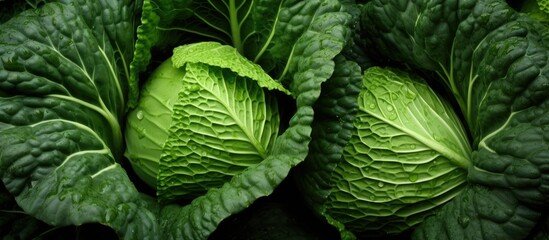Long Green Vegetables
Introduction
Welcome to the verdant world of long green vegetables, where health meets flavor and nutrition thrives. From the crisp crunch of fresh cucumbers to the leafy elegance of kale, these vibrant veggies offer a cornucopia of benefits for both body and mind. Join us as we delve into the lush realm of long greens, uncovering their culinary versatility, nutritional prowess, and the simple joy of savoring each vibrant bite.
1. Nutrient-rich green vegetables.
2. Long green veggies for health.
3. Wholesome leafy green.
4. Cooking with long green vegetables.
5. Garden-to-table greens.
6. Nutritional benefits of long green veggies.
7. Delicious recipes featuring leafy greens.
8. Growing long green vegetables at home.
9. Incorporating greens into your diet.
10. Green vegetable superfoods.
Key Takeaways
-
Nutritional Powerhouses:
- Long green vegetables, such as broccoli, asparagus, and green beans, are packed with essential vitamins, minerals, and antioxidants that promote overall health and well-being.
-
Fiber for Digestive Health:
- These veggies are rich in dietary fiber, which aids digestion, supports gut health, and helps prevent constipation.
-
Low in Calories, High in Nutrients:
- Long green vegetables are low in calories but high in nutrients, making them an excellent choice for weight management and overall health.
-
Versatility in Cooking:
- From stir-fries to salads, soups to side dishes, long green vegetables are incredibly versatile in the kitchen, allowing for endless culinary creativity.
-
Seasonal Favorites:
- Many long green vegetables are seasonal, offering a fresh and flavorful option during specific times of the year. Embracing seasonal eating can enhance both taste and nutritional value.
-
Environmental Benefits:
- Choosing long green vegetables can also have positive environmental impacts, as they often require fewer resources, such as water and land, compared to other foods.
-
Supports Heart Health:
- The nutrients found in long green vegetables, such as folate, potassium, and vitamin K, contribute to heart health by lowering blood pressure, reducing inflammation, and improving cholesterol levels.
-
Promotes Healthy Aging:
- The antioxidants in long green vegetables help protect cells from damage caused by free radicals, potentially reducing the risk of chronic diseases and supporting healthy aging.
-
Budget-Friendly Options:
- Long green vegetables are typically affordable and widely available, making them accessible options for individuals and families looking to eat healthily on a budget.
-
Simple Preparation Tips:
- Including easy and delicious preparation tips can encourage readers to incorporate more long green vegetables into their meals, such as roasting with olive oil and garlic or adding to pasta dishes for an extra nutritional boost.
-
Exploring the Nutritional Benefits
-
Rich in Vitamins and Minerals:
- Long green vegetables are abundant sources of essential vitamins and minerals. They typically contain high levels of vitamins A, C, and K, as well as folate, potassium, and calcium. These nutrients play vital roles in various bodily functions, including immune function, bone health, and blood clotting.
-
High in Fiber:
- Long green vegetables are rich in dietary fiber, both soluble and insoluble. Fiber aids digestion by adding bulk to stool, promoting regular bowel movements, and preventing constipation. It also helps regulate blood sugar levels, reduces cholesterol levels, and promotes a feeling of fullness, which can aid in weight management.
-
Antioxidant Properties:
- Many long green vegetables are rich in antioxidants, such as beta-carotene, lutein, and zeaxanthin. Antioxidants also support eye health, skin health, and immune function.
-
Low in Calories and Fat:
- Long green vegetables are typically low in calories and fat, making them excellent choices for weight management and overall health. They provide essential nutrients without adding excess calories or unhealthy fats to the diet. This makes them ideal for those looking to maintain or lose weight while still meeting their nutritional needs.
-
Hydration:
- Some long green vegetables, such as cucumbers and zucchini, have high water content, which can help keep the body hydrated. Proper hydration is essential for overall health, as it supports various bodily functions, including temperature regulation, nutrient transport, and waste removal.
-
Heart Health:
- The nutrients found in long green vegetables, such as potassium, folate, and fiber, contribute to heart health. Potassium helps regulate blood pressure, folate helps reduce homocysteine levels (an amino acid linked to heart disease), and fiber helps lower cholesterol levels. Consuming a diet rich in long green vegetables can help reduce the risk of heart disease and stroke.
-
Bone Health:
- Long green vegetables are excellent sources of vitamin K, which plays a crucial role in bone health. Vitamin K helps activate proteins involved in bone mineralization and calcium metabolism, leading to stronger bones and a reduced risk of osteoporosis.
-
A Journey Through Long Green Vegetable Varieties
A Journey Through Long Green Vegetable Varieties” would be an exploration of different types of long green vegetables, highlighting their unique characteristics, flavors, and culinary uses. Here’s how you could structure and explain this journey:
- Introduction to the Journey:
- Begin by introducing the concept of exploring various long green vegetables and their diverse qualities. Set the stage for readers to embark on a flavorful adventure through different varieties.
- Broccoli:
- The Green Superfood: Dive into the world of broccoli, often considered a green superfood due to its nutritional density. Discuss its distinctive appearance, flavor, and texture, as well as its versatility in cooking. Highlight its health benefits, such as its high vitamin C content, fiber, and cancer-fighting properties.
- Asparagus:
-
Spring’s Delight:
- Move on to asparagus, a beloved springtime vegetable known for its delicate flavor and tender texture. Describe its long, slender spears and vibrant green color. Discuss the seasonal availability of asparagus and share cooking tips to preserve its freshness and flavor. Explore its nutritional benefits, including its high levels of folate, vitamin K, and antioxidants.
-
Green Beans:
- A Versatile Favorite: Transition to green beans, a versatile and widely enjoyed long green vegetable. Discuss the different varieties of green beans, such as string beans, snap beans, and French beans. Highlight their crisp texture and mild flavor, which make them suitable for a wide range of dishes, from salads to stir-fries. Share cooking methods and recipes that showcase the deliciousness of green beans and discuss their nutritional value, including their high fiber and vitamin C content.
-
Spinach:
- The Leafy Green Powerhouse: Explore the nutritional powerhouse that is spinach, a dark leafy green vegetable packed with vitamins, minerals, and antioxidants. Describe its tender leaves and earthy flavor, which make it a versatile ingredient in salads, smoothies, and cooked dishes. Discuss its health benefits, including its high iron and calcium content, and its role in supporting bone health and immune function.
-
Cucumbers:
- Crisp and Refreshing: Conclude the journey with cucumbers, a refreshing and hydrating long green vegetable. Describe their crunchy texture and mild flavor, which make them a refreshing addition to salads, sandwiches, and snacks. Discuss their high water content, which helps keep the body hydrated, and their nutritional benefits, such as their vitamin K and potassium content.
-
Conclusion
- Wrap up the journey by summarizing the unique qualities and culinary uses of each long green vegetable variety. Encourage readers to explore these vegetables in their cooking and share their experiences. Invite them to continue discovering the wonderful world of long green vegetables and the delicious dishes they can create.







